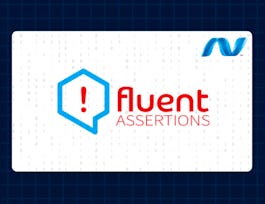In this MOOC, we learn RBAC and ABAC access control to facilitate the specification and management of access policies. We learn examples of how RBAC is supported by modern systems such as Docker and AWS IAM. We learn XACML 3.0 and an ABAC implementation for controling secure access to web documents and network resources with attribute certificates, and XACML architecture components. We show how to exhance the data security with GeoEncryption, Secure Enhanced Geolocking, and R2D2 concepts which deliver data to right places via right path. We show how Google Map and Web Crytpo


Advanced System Security Topics
This course is part of Advanced System Security Design Specialization
Taught in English
Some content may not be translated


Instructors: Edward Chow
15,623 already enrolled
Included with 
Course
(91 reviews)
Details to know

Add to your LinkedIn profile
16 quizzes
Course
(91 reviews)
See how employees at top companies are mastering in-demand skills

Build your subject-matter expertise
- Learn new concepts from industry experts
- Gain a foundational understanding of a subject or tool
- Develop job-relevant skills with hands-on projects
- Earn a shareable career certificate


Earn a career certificate
Add this credential to your LinkedIn profile, resume, or CV
Share it on social media and in your performance review

There are 4 modules in this course
In this module, we discuss the geoencryption techniques, the issues in the design and analysis of a Secure Enhanced Geolocking system for protected encrypted info with geolocking. We learn the web based implementation of an Secure Enhancing Geolocking system using Javascript with Google Map API and CryptoJS API.
What's included
3 videos3 readings4 quizzes1 peer review1 discussion prompt
In this module, we learn the techniques for using WiFi or BLE signals to estimate the geolocation of a user. We also show the technique where the value added Software Defined Network services can be used to ensure the data are delivered through a designated path to the right location.
What's included
3 videos3 readings4 quizzes
In this module, we discuss the definition of the authentication, the types of authentication credentials, and the authentication process and related requirements. we learn the Role Based Access Control, short for RBAC, which is an security approach to restricting system access to authorized users and to help specify organization's security policies reflecting its organizational structure. We use Docker Universal Control Plan and AWS IAM access control as examples for illustrating how RBAC simplifies the access control specification and management.
What's included
4 videos4 readings4 quizzes
In this module, we discuss PMI Privilege Management Infrastructure for managing the authorization of privileges within a system. We use attribute certificates as an instrument to associate access rights of the resources/services in the system to the identities or roles of the intended users of the system. We compare the differences between the PKI, the public key infrastructure which is focused on identity management, with the PMI which is focused on the management of the privileges authorized for users. We discuss their difference usages for the access control of the system. We then present the XACML, which is an eXtensible Access Control Markup Language (XACML) for specifying policies. It is an attribute-based access control system (ABAC), where attributes associated with a user or action or resource are inputs into the decision of whether a given user may access a given resource in a particular way. An implementation of ABAC system using Sun’s XACML 2.0 Java reference implementation called ENFORCE is then presented as an example.
What's included
4 videos3 readings4 quizzes
Instructors

Offered by
Recommended if you're interested in Computer Security and Networks

Coursera Project Network

Coursera Project Network

University of Colorado System

Board Infinity
Why people choose Coursera for their career




Learner reviews
Showing 3 of 91
91 reviews
- 5 stars
64.83%
- 4 stars
25.27%
- 3 stars
5.49%
- 2 stars
1.09%
- 1 star
3.29%
New to Computer Security and Networks? Start here.

Open new doors with Coursera Plus
Unlimited access to 7,000+ world-class courses, hands-on projects, and job-ready certificate programs - all included in your subscription
Advance your career with an online degree
Earn a degree from world-class universities - 100% online
Join over 3,400 global companies that choose Coursera for Business
Upskill your employees to excel in the digital economy
Frequently asked questions
Access to lectures and assignments depends on your type of enrollment. If you take a course in audit mode, you will be able to see most course materials for free. To access graded assignments and to earn a Certificate, you will need to purchase the Certificate experience, during or after your audit. If you don't see the audit option:
The course may not offer an audit option. You can try a Free Trial instead, or apply for Financial Aid.
The course may offer 'Full Course, No Certificate' instead. This option lets you see all course materials, submit required assessments, and get a final grade. This also means that you will not be able to purchase a Certificate experience.
When you enroll in the course, you get access to all of the courses in the Specialization, and you earn a certificate when you complete the work. Your electronic Certificate will be added to your Accomplishments page - from there, you can print your Certificate or add it to your LinkedIn profile. If you only want to read and view the course content, you can audit the course for free.
If you subscribed, you get a 7-day free trial during which you can cancel at no penalty. After that, we don’t give refunds, but you can cancel your subscription at any time. See our full refund policy.

